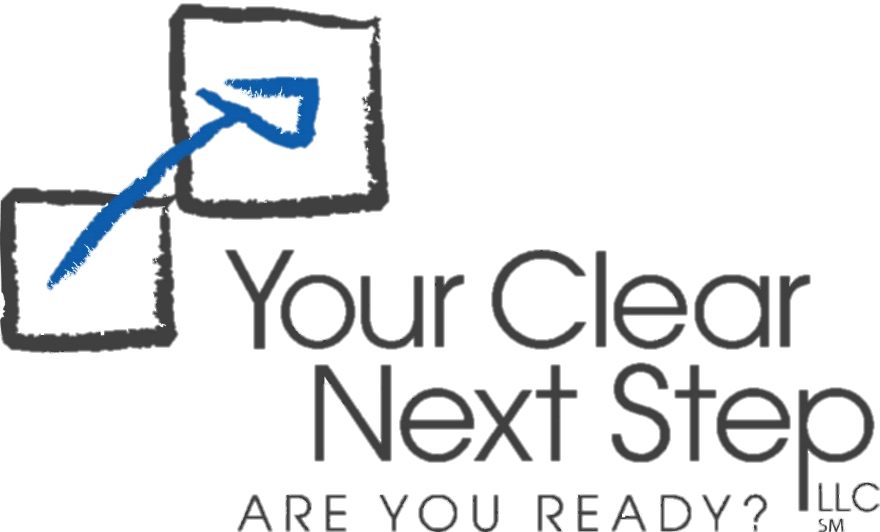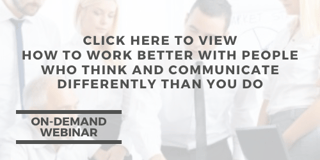Some of our most popular classes have titles like “Can You Hear Me Now?” “How to Get Your Message Through” and “Be Heard”. With that kind of demand, it sounds like you may be experiencing a phenomenon that is consistent with what we’re seeing on Facebook and other social media platforms too. Lots of people are talking, and not nearly as many are actually listening.
We make excuses for not listening:
- “I am too busy”
- “I don’t have time for that”
- “I was half listening”
- “I can listen while I do other things”
- “I was listening to the stuff I was interested in, but I kinda spaced out on the rest.”
Sinikka’s Take:
What if, instead of complaining that no one else is listening, we step right up and improve our own listening skills, model the behavior we’re looking for, and drive better results.
Here are some tips for improving our listening skills:
1. Stay in the moment
 Regardless of the topic, the duration, the environment, or the circumstance, we can be better listeners when we discipline ourselves to stay in the moment. Keep your eyes and ears and mind focused on the conversation at hand. Years ago, I used a physical reminder – a prop that was small enough to hold in my hands – to remind myself to remain silent while others were talking, instead of jumping ahead to the questions that were formulating in my mind. If you are easily distracted, set yourself up for success by carving time for conversations or staying away from windows or other sources of distraction. At a conference or networking session or busy cafeteria? Step to the edge of a crowded room, rather than being in the middle of the room when you’re trying to genuinely listen to someone.
Regardless of the topic, the duration, the environment, or the circumstance, we can be better listeners when we discipline ourselves to stay in the moment. Keep your eyes and ears and mind focused on the conversation at hand. Years ago, I used a physical reminder – a prop that was small enough to hold in my hands – to remind myself to remain silent while others were talking, instead of jumping ahead to the questions that were formulating in my mind. If you are easily distracted, set yourself up for success by carving time for conversations or staying away from windows or other sources of distraction. At a conference or networking session or busy cafeteria? Step to the edge of a crowded room, rather than being in the middle of the room when you’re trying to genuinely listen to someone.
2. Make Eye Contact
 One way to demonstrate that you really are listening is to make eye contact with the other person.
One way to demonstrate that you really are listening is to make eye contact with the other person.
- That means putting your cell phone down, so you’re not tempted to pick it up and look down at your screen.
- That means setting your pencil or pen down, so you don’t just write and write and write without looking at them.
- Do what you need to do. To listen well, especially if you’re physically in the same room, make eye contact.
- There is such great technology out there now like Skype, Zoom, and Go To Meeting that allows you to see the person you’re talking to, even if you’re in geographically different locations. Take advantage of the tech and connect with another human being. Show them you are listening by making eye contact, even if only briefly.
3. Control Your Own Body Language
How awful is it to have someone listening to you who is rolling their eyes, checking their watch, or turning away? On the flipside, how affirming is it when the person you’re talking to nods when you nod or smiles at the things that you’re smiling at? Take some time to be aware of your facial and other non-verbal responses to messaging. I’m not advocating here that we become robots or that we hide behind a mask. Instead, I am advocating that we apply a little bit of emotional intelligence to manage ourselves from unnecessary distractions, and to detect what the other person needs as they are speaking.
4. Listen the Way They Like Best
Communication, including effective listening, is an art more than a science. As an art, that means that the beauty is in the eye of the beholder. If I’m talking to you one-on-one, and you don’t think my listening skills are beautiful, then they’re not. If you are talking to someone else one-on-one and that other person doesn’t believe your listening skills are beautiful, then they’re not. In a one-on-one communication, we should be giving the other person the gift of participation in that communication in the way that they find beautiful.
Some people like to hear their own words said back to them. If you’re listening to someone who appreciates this, find a moment to say something like “I heard you say…”
- There are some people who prefer it when you write their words down. If you’re listening to someone who appreciates this, find a moment to write down keywords or phrases – especially action items – and let the other person know that you “listened” this way.
- Other people like it when you ask questions about what they are saying. If you’re listening to someone who appreciates questions, then prepare a handful of insightful questions you can ask. These can be questions about the past (“what was it like to…”, “how did you choose to…”). They can be questions about the present (“what are you thinking or feeling about this now?”, “what are your concerns today?”, or “what are you most proud of” ). Or you can ask questions about the future (“what are your next steps?” ,”how can I help?” etc.)
- Still other people appreciate being validated as they are being listened to. If you are listening to someone who likes to be validated, you might insert phrases such as “that sounds interesting” or “you must have worked hard on that“ or “you’ve done a lot of thinking in this area”. A communications coach I know advises that listening and responding eliminates the word “I’”. If you are listening to someone who wants to be validated, they’re not looking for you to validate them using “I” statements; they’re looking for you to validate them using “you” statements. In this case, effective compliments do not begin with “I like” or “I love” or “I appreciate” – they begin by focusing on the other person.
The Bottom Line
If you are interested in learning more, check out our on-demand training, How to Work Better with People who Think and Communicated Differently than You Do. These are just a handful of tips that we find useful for effective listening. What do you like? Go ahead and tell us, we’re listening!









